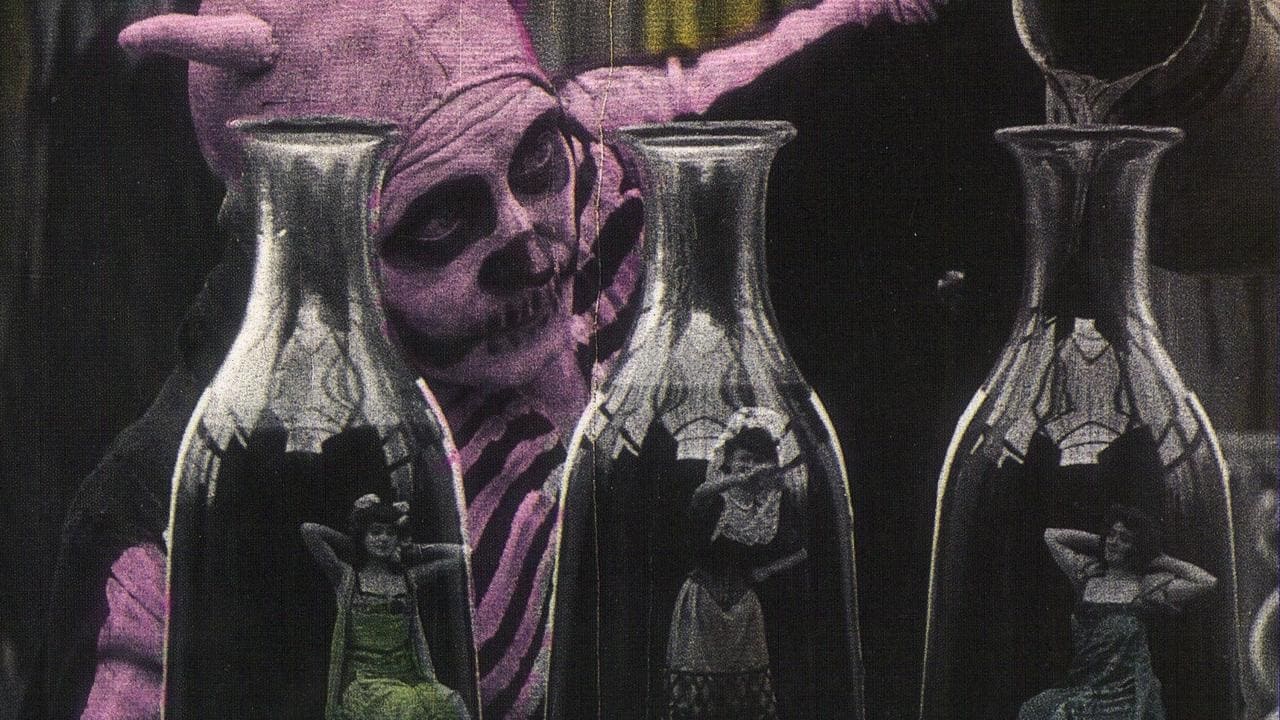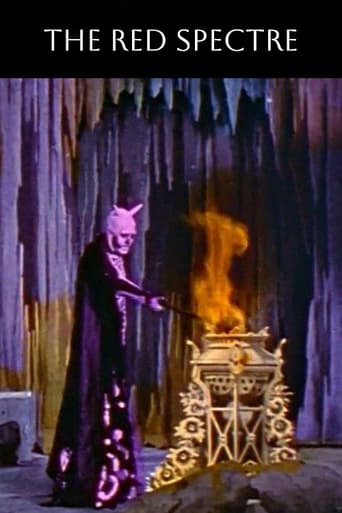Gurlyndrobb
While it doesn't offer any answers, it both thrills and makes you think.
Lollivan
It's the kind of movie you'll want to see a second time with someone who hasn't seen it yet, to remember what it was like to watch it for the first time.
Adeel Hail
Unshakable, witty and deeply felt, the film will be paying emotional dividends for a long, long time.
Payno
I think this is a new genre that they're all sort of working their way through it and haven't got all the kinks worked out yet but it's a genre that works for me.
Horst in Translation (filmreviews@web.de)
"Le spectre rouge" or "The Red Spectre" is a French silent film from 1907, so this one has its 110th anniversary and it is a collaboration between Segundo de Chomón and Ferdinand Zecca, two of the greats from the early days of film, even if their names don't mean anything to most people today. It's their loss as these two were highly prolific and successful back in the day. And there work here looks spectacular in terms of effects, costumes and even colors. The red referenced in the title was nothing short of amazing and this movie was certainly far ahead of its time. But that is also a problem because the medium was not yet ready for the minds of SdC and Zecca and the evidence are these 9 minutes here. Without the use of sound or at least intertitles, it is virtually impossible to understand even very basically what was going on. Such a shame as this little film looked so good. But story trumps everything and that's why eventually I give it a thumbs-down. Not recommended.
MisterWhiplash
Also, the story for this is somewhat confusing; if I hadn't seen the brief plot summary on Letterboxd, I wouldn't know (until near the end anyway) that this was about a Good Woman fighting the devil or a demon of hell or whoever this guy in a robe and skull-face is. It seemed if it was about a woman who might have even been this demon's boss, or maybe even some annoying underling, screwing with this Demon-Man has a penchant for bottling up women (literally, you can see this in full close-up, and that's how it seems - a full 8 years before Griffith did it in in Birth of a Nation you get a close-up, albeit in camera and with separate shots without a cut).But at any rate, this is a fun short because the filmmaking is clever and inventive: we're seeing the process this devil takes with his female wares/prisoners, and it's through blazing red and orange colors (thanks silent film technology!) and with a magician's eye for trickery. By the end 'good' does prevail, but the joy is in the evil, if that makes sense; it's filmmakers reveling in the villainy of this Demon, or at least playing with the line between showing something as being *bad* as in a devil, or something that is... enjoyable to do, like, uh, bottling up women and making them prisoners. Or slaves. Or, I don't know what. This is simply cool, and it also empowers women to fight Satan's ways at the end of it all! How to do that, well, don't look at this for answers to that question, just watch magic tricks!
AnnieLola
"The Red Spectre" is simply a themed stage magician's routine enhanced by trick photography. One needn't trouble over any real plot line, and there isn't any point to what happens to the women in the routine; they're all Lovely Assistants assisting the magician! Notice how they pose becomingly in their pretty costumes, preen, dance and nod to the audience? Even the three shown miniaturized in the milk bottles look quite happy and pleasant, since they're just doing their job of being decorative parts of the act. The "Good Fairy/Spirit" looks more like a rival magician (notice her bat-winged cape), and far from being a contest between Good and Evil, it's more a challenge between equals. This adds a bit more narrative, an element of conflict, but really doesn't seem intended to convey any deep significance. The sorceress is almost another Lovely Assistant, just with a more active role and showing more leg. Notice that far from deploring his dark powers, she appears to absorb them herself at the last by assuming his cloak after having vanquished him. This is a charming example of stage technique of the time, and the final scenery effects and beauty pageant are quite delightful. Just watch it as an old-time magic act and it makes perfect sense!
wmorrow59
The first decade of the twentieth century saw the production of dozens of brief "trick films" which pushed the boundaries of the new medium, and France was the capital of this activity. Georges Méliès is the best known creator of these films, but The Red Spectre, which was produced at the Pathé Studio as a collaboration between Méliès' fellow pioneers Ferdinand Zecca and Segundo De Chomon, is perhaps the most bizarre and fascinating of them all. Or at least, allowing for the fact that so many of these films are lost, it certainly ranks with the best of the survivors. It is better seen than described, genuinely dreamlike in its images and transitions, and quite strange, but quite satisfying as well. The action lasts only about 8 or 9 minutes, but when it's over you feel as if you've been permitted to visit another world. When The Red Spectre was first exhibited the black & white footage was hand-colored to produce a dazzling effect, and happily, this material survives: a color print was discovered in a junk-yard in Mexico, and purchased for $25.00!Our setting is a mysterious underground grotto, and our "host" is a demonic magician who seems to be toying with the souls or spirits of several captive women. He causes them to levitate, then burst into flames; he captures their ashes in bottles, brings them back to life in miniaturized form, etc. The magician is opposed throughout by a Good Fairy who resembles Peter Pan (portrayed by a woman, as Peter traditionally is on stage). The precise meaning of the action is difficult to determine at times, but the central conflict amounts to a struggle between the forces of Good and Evil.One effect is especially notable: when the wicked magician produces three glass bottles, each holding a tiny woman prisoner, and brings them downstage to allow for a close-up, the scene instantly reminds latter day viewers of a similar sequence in The Bride of Frankenstein (1935). Did James Whale see this film, or is the similarity a coincidence? Notable, too, is the depiction of a device very much like television-- strongly suggested by the evil conjurer's magic screens, each of which depicts a series of moving images. Here's a real cinematic milestone: a film that predicts the coming of T.V., and, on top of that, attributes its invention to a demon!

